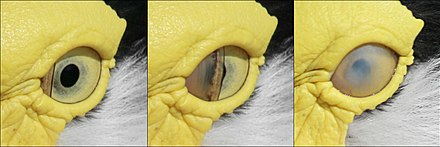| Olympic Mens b-ball champion Russel Westbrook bringing it |
So the annual "shark week" put on by the Discovery Channel is winding down this week here in the states and I have a couple of thoughts...
First of all they should just name the week "Great White Shark Week" because every show seems to be about the "man in a grey swimsuit" (surfers will understand reference). Don't get me wrong- I love the great white- but to exclude all the other species of sharks really does a dis-service to shark biology, awareness, and conservation efforts. I mean it gets a little disingenuous when Discovery keeps on giving you reels of shark attack clips and leaping macropredatory events off seal island - and then reminds you at the end that sharks are "gravely imperiled in the world's oceans". And for much of the general public the great white- because of shark week, the Jaws franchise, and its penchant for nibbling on us- has become emblematic of all sharks. But seen in light of the diversity of shark species worldwide I think it is fair to point out that the great white- Carcharodon carcharias - is actually very aberrant, specialized, and downright different from most sharks.
First of all white sharks, along with other lamnids such as makoes, are endothermic poikilotherms, that is they can maintain an elevated temperature from their surroundings but it is not constant like in mammals. Secondly they are just unusually massive and girthy - which is related to their ability to maintain heat in cold environments, perform long distance migrations, and fusiform shape. A great white the same length as a tiger shark could easily weigh twice as much as the tiger. Third of all is their behavior- white sharks do some pretty un-sharklike things like spy-hopping- generally characteristic of marine mammals but not fish.
For a person on a surfboard it would be very unnerving to see such mammalian type behavior on the part of a fish but great whites do appear to engage in this behavior to satisfy some curiosity on their part and thus display some innate awareness of a world view larger than their immediate watery realm.
And finally those eyes, "black eyes, like a doll's eyes."- Jaws, Quint. Well it actually is a bit of a myth that the great white has total jet black eyes as the photos below attest.
 | |
| He is watching you... |
 |
| People who have been this close to see the jet blue iris of the great white will report it tracking them |
Although sharks were once considered to have bad vision it turns out that they have quite good visual adaptations. And great whites, which can contract their pupils (no teleost fish can do this), have rods and cones, color vision, tapetum lucidum, and something approximating "sunglasses" to diminish glare, have some of the most advanced visual adaptations among sharks- again setting the great white apart from its peers. Check out this article.
"When he comes at ya, he doesn't even seem to be living...until he bites ya, and those black eys roll over white..."- Jaws, Quint.
Well it turns out great whites are a little different here too. You see while great whites do indeed roll their eyes back into their skull while biting the largest family of large predatory sharks, the carcharinoids, whom Quint was most certainly referring to, have a nictitating membrane that protects the eye.
 |
| Caribbean Reef Shark nictitating eyelid |
A quick perusement of the internets reveals quite a few animals including some reptiles, birds, and even some mammals have nictitating eyelids.
 |
| Nictitating eyelid masked lapwing |
Like sharks, birds of prey and herons will close their nictitating eyelids while struggling with prey.
Hmmmm... birds are derived theropods and many theropods, like sharks, had a "head first"predatory attack mode. Both sharks and birds are very visual critters that use their nictitating eyelids to protect their eyesight. Theropods were very visual critters and likewise would have needed to protect their eyes during struggles with prey and such...it begs the question- did theropods have nictitating membranes?
Well, I can't say for certain- but the fact that their living descendants have nictitating eyelids and many "headfirst predators" like sharks have them I find it extremely likely that theropods had nictitating eyelids as well.
So why don't I ever see restorations of allosaurus with a spooky eyelid covering its eye when it chomps onto its prey? I don't know- maybe this potential aspect of their behavioral anatomy has not yet been explored...whatever the case I don't think that is beyond the limits of conjecture to depict theropods with nictitating eyelids.
I don't even think it would be out of bounds to depict a T-rex rolling its eyes back into its skull like the great white does.
Cheers!!!
Support me on Patreon.
Like antediluvian salad on facebook.
Watch me on Deviantart @NashD1.Subscribe to my youtube channel Duane Nash.
My other blog southlandbeaver.blogspot.

No comments:
Post a Comment